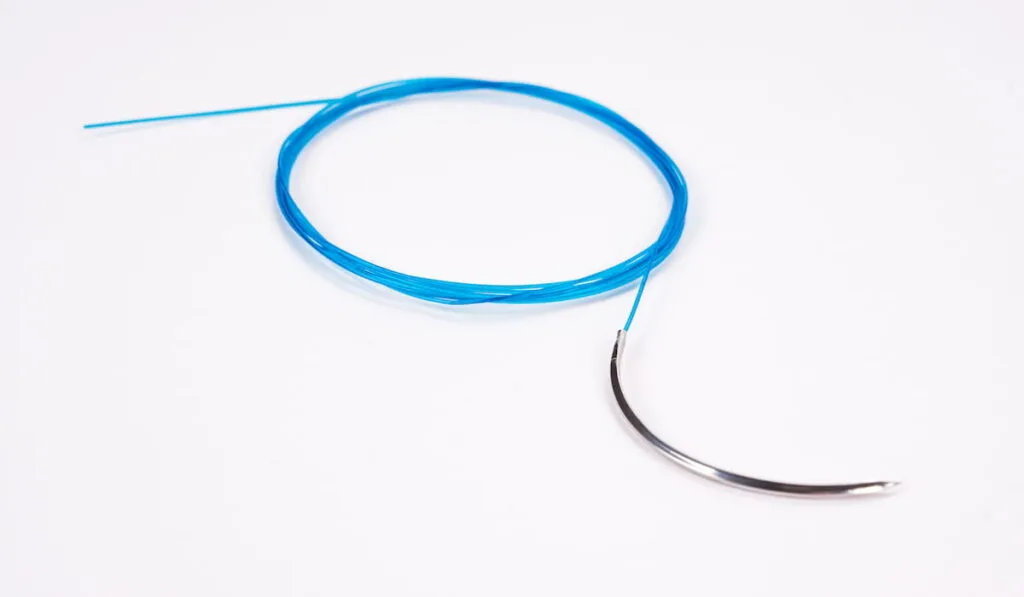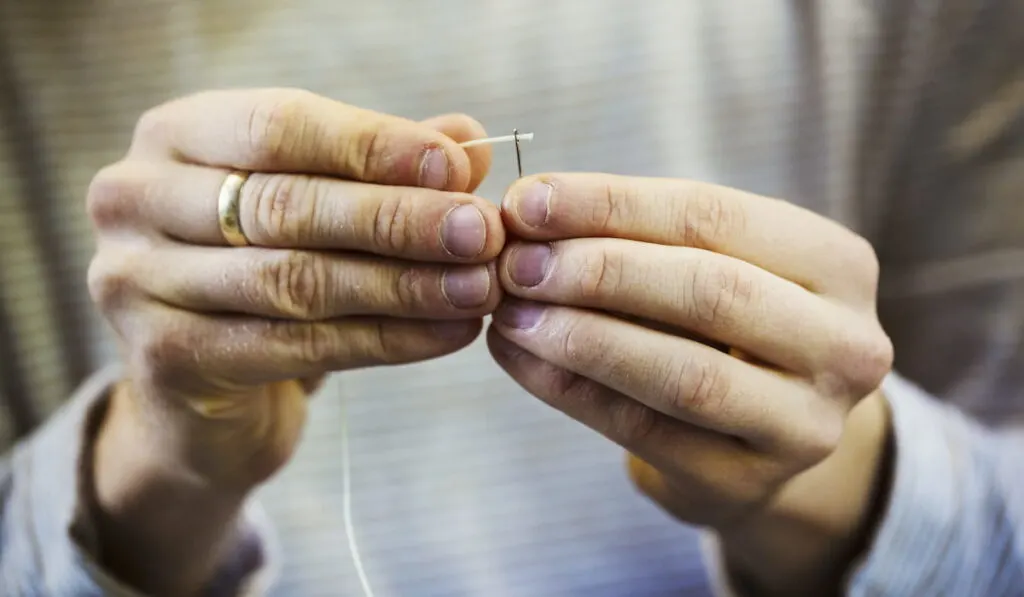They might not be as popular as straight sewing needles but curved sewing needles are a thing. It doesn’t matter the kind of sewing you do, curved needles are a great addition to your sewing workbox.
So, what are curved sewing needles used for?
Curved sewing needles were created for repairing fabrics like lampshade fabrics. They are also used in sewing upholstery fabrics, fabric boxes, and creating crafty stitches. The curvature of these sewing needles allows them to easily reach the angles straight needles cannot get to.

This feature is what makes them an important tool in any sewing kit.
There are many types of curved needles and in this article, we shall discuss the varieties and how to use them. Also, if you are wondering what type of sewing projects you should use curved needles for, we’ve got some examples for you.
How to Use Curved Sewing Needles
You would not find too many differences between how to use straight sewing needles and curved needles. For one, no matter the type of needle you are using, the first thing to do is to thread it.
The type of thread you intend to use will be determined by what you are sewing. If you are sewing a thick material such as leather, you may want to opt for thicker threads. But if the material is not very thick, a finer thread would do.

After threading the needle, make a knot. The knot should be large enough to not go through the seams. Once you have made a suitable knot, you can proceed with your work.
To start sewing, push the needle through the fabric or material you are working on. This is where you will notice the difference between straight needles and curved needles.
As you push the curved needle through the fabric, it works its way up, out of the fabric. The curvature of the needle serves as an inbuilt pivot and makes sewing at angles easier for you. This is unlike straight needles, which you have to push and adjust with your fingers until they come out.
You should work with the type of stitch you are comfortable with. Ensure this stitch is one that suits the type of project you are working on. You may also want to consider visual appeal while choosing your stitch.
If you are carrying out repairs with a sewing needle, you should follow the existing stitch on the material. If you use a different stitch the outcome may be unappealing.
A little hint, if you are working with a very thick material, you may want to get a plier or some other tool with a strong grip. Pushing or pulling needles through thick materials can be tough sometimes but pliers will help with this.
Types of Curved Sewing Needles
Curved sewing needles come in different forms. You will find different types of curved sewing needles based on their thickness and curvature. Based on thickness, there are 2 types of curved sewing needles: thick needles and fine needles.
Thick Curved Sewing Needles
Earlier we mentioned that if you are working on a thick fabric or material, you should opt for a thick thread. Well, a thick thread is not all you will need in such situations. You will need a thick needle too.
The thicker the thread, the thicker the needle you should get. Thick needles have wider eyes that thick threads can easily pass through.
If you do not get a needle with a sufficiently wide eye, the chances are your thread will break often. Generally, a needle eye with a diameter about 1.5 times the diameter of the thread will do.
How do you identify a thick needle? Well, visually they will appear thick. Apart from observing them with your eyes, the needle number is a good way to identify a thick curved needle. Thicker needles will have lower needle numbers than fine curved needles.
When working with fine threads and fine stitches, going for thick curved needles may not be the best option. It would be hard for you to maintain the thinness of the stitch using a thick needle. Getting a finer needle will give you the best result.
Fine Curved Sewing Needle
Fine curved needles are also called curved beading needles. They offer better results when you are creating fine stitches and using fine threads.
Generally, fine needles are useful for sewing flat/thin fabrics and beading. They are also useful for making crafty stitch designs.
Although by looking you can tell a needle is thin/fine but the needle number is a more precise way of telling this. Fine needles have higher needle numbers than thicker needles.
Round-Bodied Curved Needles and Half-Circle Needles
Based on their curvature, there are 2 main types of curved needles: round-bodied curved needles and half-circle needles.
The round-bodied curved needles are not as arched as the half-circle needles. Like the name says, the half-circle needles are more like half circles. While the round-bodied curved needles are like arcs.
7 Examples of Projects to Use Curved Sewing Needles For
Here are 7 projects you can do easily and efficiently with curved sewing needles:
- Create a medallion quilt pattern on your duvet
- Create a center rug with medallion pattern
- Make a beaded necklace
- Make a fabric bin
- Make a bed skirt
- Upholster your coffee table
- Create covers for your cushions
Resources
- https://thedomesticwildflower.com/how-to-use-a-curved-needle-to-mend-upholstery/
- https://www.jjneedles.com/buy-needles/general-hand-sewing/curved-repair-sewing-needles.html
- https://www.needlenthread.com/2012/02/curved-needle-for-embroidery.html
- https://restore-products.co.uk/products/fine-curved-needles
- https://sewguide.com/hand-sewing-embroidery-needles/#11_curved_needles
- https://needlework.craftgossip.com/how-to-use-a-curved-needle/2012/02/26/
- https://www.curbly.com/m/18286-upholstery-newbies-here-is-a-roundup-of-projects-you-could-try-this-weekend
